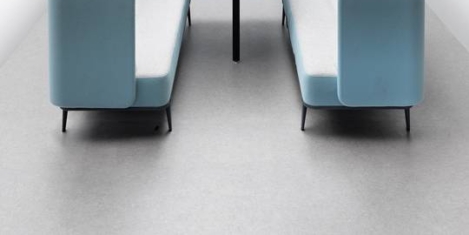September 6, 2016
Post Brexit business confidence returns but overall uncertainty remains 0
 Blink and you’ll miss some news item on Brexit, so here’s just some of the stuff we’ve picked up on the last few days. It’s hard to imagine that any of these stories might be woven into some sort of coherent narrative, especially when the Prime Minister has yet to announce any details or timescales for the UK’s mooted withdrawal from the EU, if not the Single Market. Some of the ifs and buts are laid out in this excellent blog, but the reality is that nobody really knows what will happen and, as the writer suggests, the UK may not have the expertise to deliver a coherent withdrawal anyway. In the meantime, there appears to be some sense that business is returning to normal. The key CIPS/Markit survey of business confidence has bounced back both quickly and strongly and there are other signs that not all is doom and gloom. That said, there are clear signs that overseas partners are spooked amid the uncertainty even though the still low Sterling exchange rate continues to make the UK attractive.
Blink and you’ll miss some news item on Brexit, so here’s just some of the stuff we’ve picked up on the last few days. It’s hard to imagine that any of these stories might be woven into some sort of coherent narrative, especially when the Prime Minister has yet to announce any details or timescales for the UK’s mooted withdrawal from the EU, if not the Single Market. Some of the ifs and buts are laid out in this excellent blog, but the reality is that nobody really knows what will happen and, as the writer suggests, the UK may not have the expertise to deliver a coherent withdrawal anyway. In the meantime, there appears to be some sense that business is returning to normal. The key CIPS/Markit survey of business confidence has bounced back both quickly and strongly and there are other signs that not all is doom and gloom. That said, there are clear signs that overseas partners are spooked amid the uncertainty even though the still low Sterling exchange rate continues to make the UK attractive.




















 A skim through workplace features in the media and you’d be forgiven for thinking that the traditional office is no longer with us. According to the narrative, we’re all now 20-somethings, working in open-plan warehouses, with table football, bean bags and comfy sofas to lounge on, while drinking our custom-made soya lattes. When in actual fact, while more relaxed, fun and funky offices tend to make the headlines, the majority of people still work in a relatively traditional way, with their PC or laptop, a desk and an ergonomic task chair. What’s more, with an ageing workforce, we certainly aren’t all 20-somethings, with DWP (Department of Work and Pensions) figures revealing that the employment rate for people aged 50 to 64 has risen by 14 per cent in the last 30 years, and doubled for over 65s. So designing with just the youngsters in mind simply doesn’t add up. Recent research by the Senator Group, backs up this view.
A skim through workplace features in the media and you’d be forgiven for thinking that the traditional office is no longer with us. According to the narrative, we’re all now 20-somethings, working in open-plan warehouses, with table football, bean bags and comfy sofas to lounge on, while drinking our custom-made soya lattes. When in actual fact, while more relaxed, fun and funky offices tend to make the headlines, the majority of people still work in a relatively traditional way, with their PC or laptop, a desk and an ergonomic task chair. What’s more, with an ageing workforce, we certainly aren’t all 20-somethings, with DWP (Department of Work and Pensions) figures revealing that the employment rate for people aged 50 to 64 has risen by 14 per cent in the last 30 years, and doubled for over 65s. So designing with just the youngsters in mind simply doesn’t add up. Recent research by the Senator Group, backs up this view.
 A series of reports published in the past few days highlight the challenges faced by Britain’s disabled workers. The studies claim separately that disabled workers are keen to work but are less likely to be in employment and may be hiding disabilities from employers, are paid less when they are in work and that many employers do not feel they are well equipped to deal with the needs of disabled staff. The first study from Reed in Partnership and Disability Rights UK found that one in ten employers do not feel able to support a disabled employee. Meanwhile research from the Equality and Human Rights Commission (EHRC) found that employees who experience mental ill-health earn up to 42 per cent less than colleagues. A third report from Citizen’s Advice found that 40 percent of disabled people would like to work but can’t find a job. And finally a report from RIDI claims that many people applying for jobs may be hiding their disability from employers.
A series of reports published in the past few days highlight the challenges faced by Britain’s disabled workers. The studies claim separately that disabled workers are keen to work but are less likely to be in employment and may be hiding disabilities from employers, are paid less when they are in work and that many employers do not feel they are well equipped to deal with the needs of disabled staff. The first study from Reed in Partnership and Disability Rights UK found that one in ten employers do not feel able to support a disabled employee. Meanwhile research from the Equality and Human Rights Commission (EHRC) found that employees who experience mental ill-health earn up to 42 per cent less than colleagues. A third report from Citizen’s Advice found that 40 percent of disabled people would like to work but can’t find a job. And finally a report from RIDI claims that many people applying for jobs may be hiding their disability from employers.








August 31, 2016
Addressing the five negative influences on organisational culture 0
by Matias Rodsevich • Comment, Flexible working, Knowledge, Workplace
(more…)